How Wide Is Utah? Total Distance from East to West
Centrally located in the American West, Utah, also called the Beehive State, embodies a rich history and stunning landscapes.
Famous for its world-famous national parks, breathtaking landscapes, and world-class outdoor activities, Utah is a haven for nature enthusiasts and thrill-seekers alike. Utah offers its residents an excellent quality of life and a unique travel experience for its visitors.
Utah is roughly 270 miles (435 kilometers) miles wide from its easternmost to westernmost point.
Facts to Know About Utah
- Mighty 5 National Parks: Utah has five spectacular national parks: Arches, Bryce Canyon, Canyonlands, Capitol Reef, and Zion.
- Winter Olympics Host: Salt Lake City hosted the 2002 Winter Olympics, the first time in the United States since 1980.
- Dinosaur Capital: Vernal, Utah, is known as the “Dinosaur Capital of the World” as the area is rich in dinosaur fossils.
- State Symbols: Utah has unique state symbols, including the state cooking pot (Dutch oven), the state fossil (Allosaurus), and the state bird (California gull).
- Inland Sea: Millions of years ago, much of what is now an inland sea covered Utah. Fossils from prehistoric marine life remain in the state’s rocks and canyons.
- Skiing Paradise: Utah is renowned for its world-class skiing and snowboarding resorts.
- International Dark Sky Parks: Utah has several International Dark Sky Parks. It is an ideal destination for stargazing and astrophotography.
- Largest Open-Pit Copper Mine: The Bingham Canyon Mine, southwest of Salt Lake City, is one of the world’s largest open-pit copper mines. It is so massive that it can be seen from space.
Becoming Part of the United States
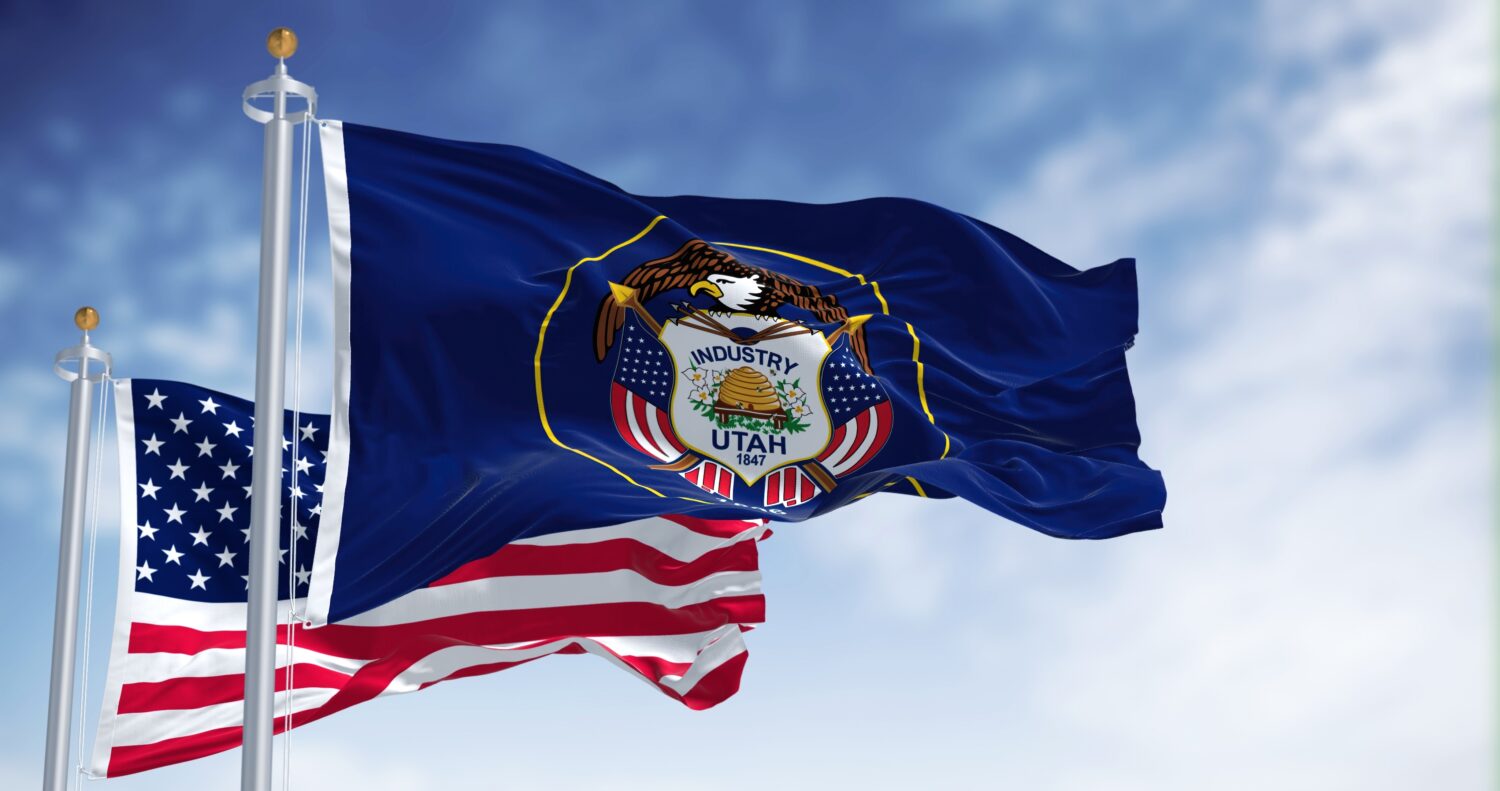
©rarrarorro/Shutterstock.com
In the 18th century, Spanish explorers, including the Dominguez-Escalante Expedition, first explored the area known as modern Utah. In 1847, Mormon pioneers led by Brigham Young established the first permanent non-indigenous settlement. Young and his followers, seeking religious freedom and refuge from persecution, arrived in the Salt Lake Valley and founded Salt Lake City. Their arrival marked the beginning of Mormon settlement in the area, significantly impacting the region’s history.
A year later, following the Mexican-American War in 1848, the United States acquired the territory, which then became Utah, as part of the Treaty of Guadalupe Hidalgo. Initially, Utah was part of the larger Utah Territory in 1850. The Mormons from the settlement played a prominent role in the territorial government. Brigham Young also served as the first territorial governor.
In the late 1850s, tensions between the Mormon settlers and the federal government escalated. It led to a conflict known as the “Utah War.” Concerned about the power and autonomy of the Mormons, the U.S. government sent troops to Utah. The conflict ended without significant bloodshed, and Alfred Cumming, the new governor, was appointed to oversee the territory.
To become a state, Utah’s path was marked by a series of challenges. It included efforts by the federal government to suppress polygamy, a practice among some Mormon leaders and followers. The U.S. government enacted several laws to target polygamy, such as the Morrill Act and the Edmunds Act. Finally, in 1890, under pressure from the federal government, the LDS Church officially renounced the practice of polygamy.
Utah gained statehood after the LDS Church’s leadership made efforts to align with American values and laws. On January 4, 1896, Utah became the 45th state of the United States.
Geography of Utah
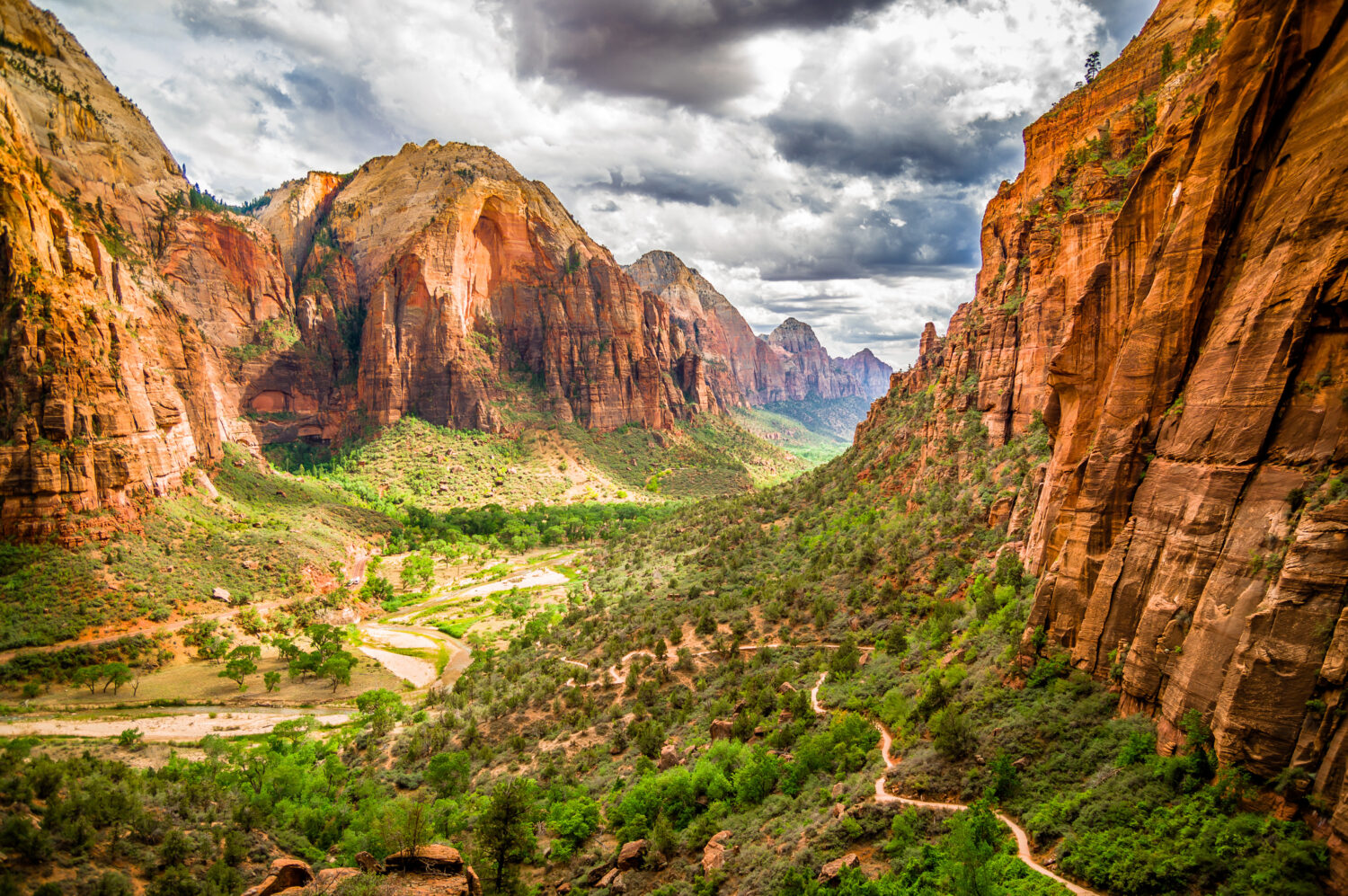
©Fotos593/Shutterstock.com
Utah is a stunning state in the western part of the country. The state is home to striking geological features, mountain ranges, and expansive deserts.
Southern Utah is famous for its “Mighty 5” national parks — Arches, Bryce Canyon, Canyonlands, Capitol Reef, and Zion —each offering its own distinct geography and natural wonders. Two of which are really famous: Arches National Park and Zion National Park.
Arches National Park
This national park is home to over 2,000 natural stone arches, including the famous Delicate Arch, which became an iconic symbol in Utah. With its rugged terrain, red rock canyons, and thousands of stone arches, this park is a paradise for hikers, nature enthusiasts, and photographers.
Zion National Park
Zion National Park offers mesmerizing landscapes in the southwestern part of the state. Towering sandstone cliffs, deep canyons, and the meandering Virgin River characterize the park. Visitors can explore these canyons through various hikes. The Narrows allow park visitors to wade through the river amidst towering rock walls. In Zion, Angel’s Landing is one of the most iconic hikes in the country. It is also extremely difficult and dangerous. Permits are mandatory for this hike through seasonal and day-before lotteries.
Other Natural Attractions
Utah’s geography is also home to large mountainous regions, including the Wasatch Range, which runs through the northern part of the state. This range is home to Park City Mountain Resort and Deer Valley, some of the finest ski resorts in the country. They attract winter sports enthusiasts from around the world.
In northern Utah, the Great Salt Lake is the largest saltwater lake in the Western United States. Its high salinity levels give it a unique ecosystem and a haven for migratory birds. The lake covers an area of about 1,700 square miles (4,400 square kilometers). This body of water is one of the saltiest bodies of water in the world, even more saline than the ocean.
West of the Great Salt Lake is the Great Salt Lake Desert, a vast and arid landscape known for its salt flats. The Bonneville Salt Flats, an iconic feature of this desert, is a stunning place that attracts visitors worldwide.
Overall Size of Utah
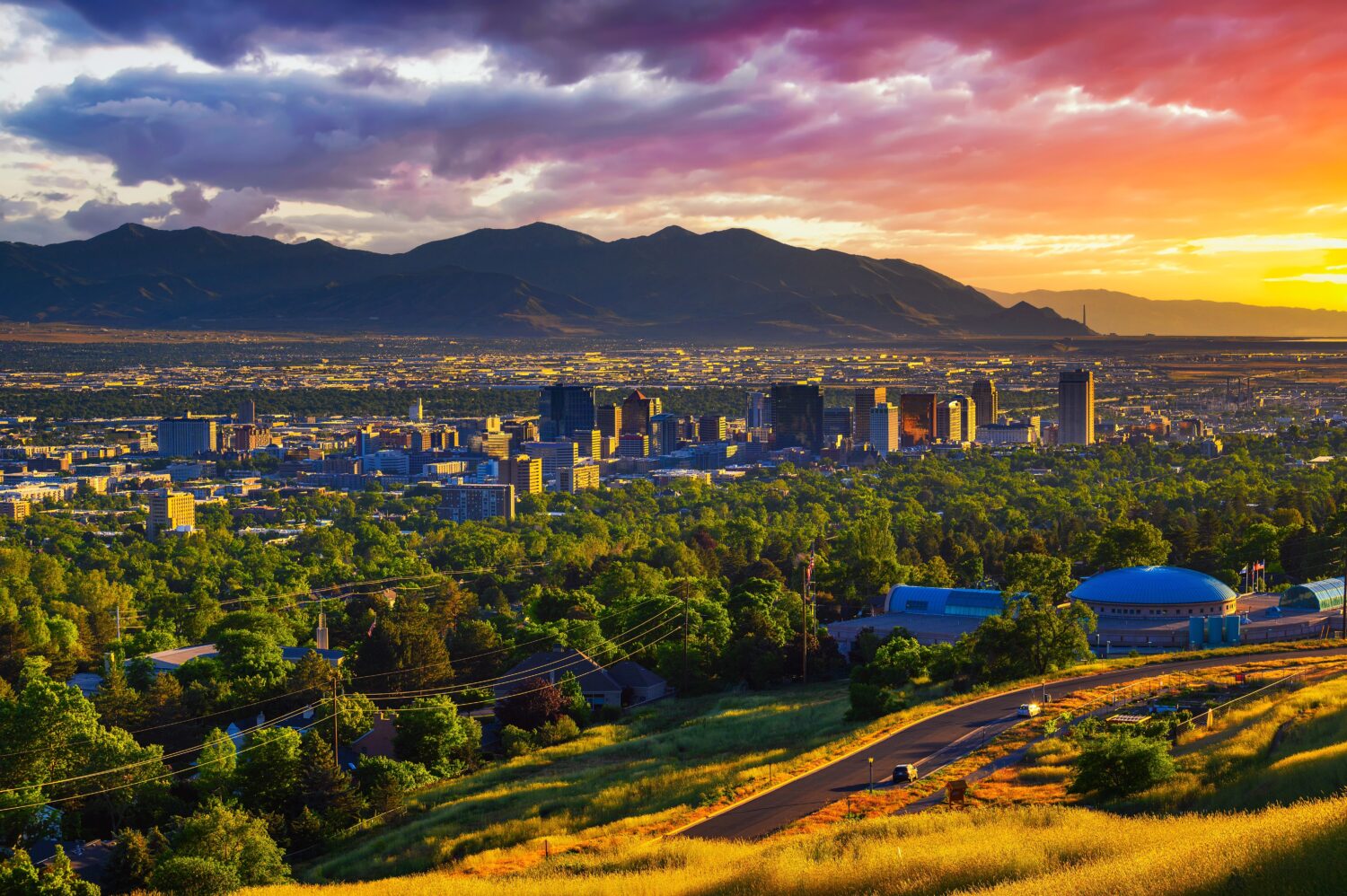
©Nick Fox/Shutterstock.com
Utah boasts a land area covering approximately 84,899 square miles (219,887 square kilometers). Countrywide, in terms of land area, Utah ranks as the 13th largest state in the United States. The state’s dimensions extend approximately 270 miles (435 kilometers) from easternmost to westernmost points at its widest points. It also spans 350 miles (563 kilometers) from the northernmost point to the southernmost point.
With its large land area, Utah represents about 2.6% of the total landmass of the United States. Despite its relatively modest size, the state offers an extraordinary range of landscapes, from high mountain ranges to vast desert expanses.
As of the 2023 estimate, Utah had a population of 3,423,938, the 30th most populous state in the country. Its population density varies in the state, specifically near larger cities like Salt Lake City, West Valley City, and West Jordan.
Utah, since 2010, has been the fastest-growing state in the country, with an increase of nearly 24% in only 13 years. The quality of life drives this population growth, as Utah is often ranked as the best state to live in the country. Utah’s cost of living, low crime, good education, and excellent infrastructure highly contribute to this high ranking.
Utah’s economy includes sectors such as technology, aerospace, and healthcare. Salt Lake City has emerged as a growing tech hub called “Silicon Slopes.”
Additionally, many new inhabitants are attracted by the proximity to outdoor activities such as national parks, hiking, skiing, snowboarding, mountain biking, and rock climbing.
Where Is Utah Located on the Map?
Utah is in the Western United States region, one of the country’s four major geographic regions. Also called the Beehive State, Utah is bordered by six states. The neighboring states include Idahoa and Wyoming to the north, Nevada to the west, Arizona to the south, and Colorado to the east.
Utah is also part of the Four Corners, where the borders of Arizona, Colorado, New Mexico, and Utah meet. This place is unique in the United States.
Centrally located in the American West, Utah is in proximity to major cities, including Denver, Las Vegas, and Phoenix.
Utah’s Width in Comparison to Other States
Even with its large land area, Utah boasts a relatively small width from the easternmost to the westernmost point compared to its neighboring states in the American West.
Let’s compare Utah’s length from east to west to some other states in the region.
| State | East-to-West Width (Approximate) |
|---|---|
| Alaska | 2,261 miles (3,639 kilometers) |
| Texas | 773 miles (1,244 kilometers) |
| Montana | 630 miles (1,015 kilometers) |
| Colorado | 380 miles (612 kilometers) |
| Wyoming | 375 miles (604 kilometers) |
| California | 360 miles (579 kilometers) |
| Nevada | 322 miles (519 kilometers) |
| New Mexico | 344 miles (552 kilometers) |
| Idaho | 305 miles (491 kilometers) |
| Utah | 270 miles (434 kilometers) |
Wildlife In Utah
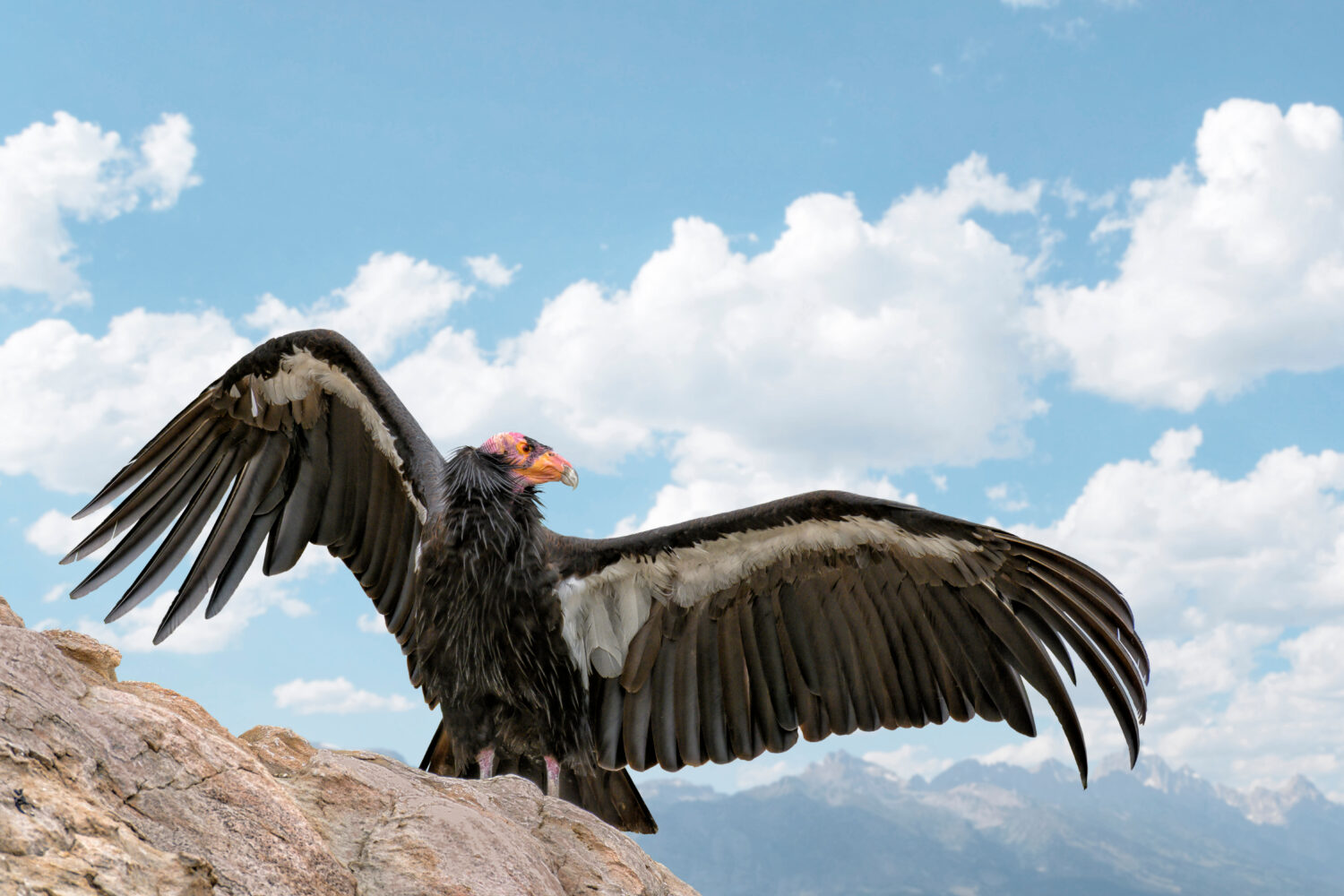
©Barbara Ash/Shutterstock.com
Thanks to its diverse landscapes, from high mountain ranges to arid deserts, Utah provides habitats for various wildlife species. It includes mammals, birds, reptiles, amphibians, and fish.
Utah’s Department of Natural Resources and various conservation organizations work to protect and preserve the state’s diverse wildlife populations and their natural habitats. These efforts focus on habitat restoration, wildlife research, and public education.
Mammals
Mule deer are prevalent throughout Utah. They mostly live in forests, grasslands, and sometimes suburban areas. Utah also has a significant elk population, specifically in the state’s mountainous regions.
Rocky Mountain bighorn sheep inhabit Utah’s rugged, high-altitude areas, including the Uinta Mountains. Mountain lions live in Utah’s remote mountainous regions but are very elusive and hard to spot.
Finally, coyotes are common throughout the state. These adaptable predators live in both urban and rural environments.
Birds
Utah’s diverse landscapes provide ideal hunting grounds for the majestic golden eagles. Additionally, Utah’s southwestern region, including Zion National Park, is part of the California Condor Recovery Program. It is one of the few places in the world where visitors can see these critically endangered birds.
Peregrine falcons nest in Utah’s cliffs and canyons. These birds are famous for their speed and hunting prowess.
The greater sage grouse elaborates its mating rituals in the state’s sagebrush steppe habitats. This rare bird species is a sight to behold.
Reptiles and Amphibians
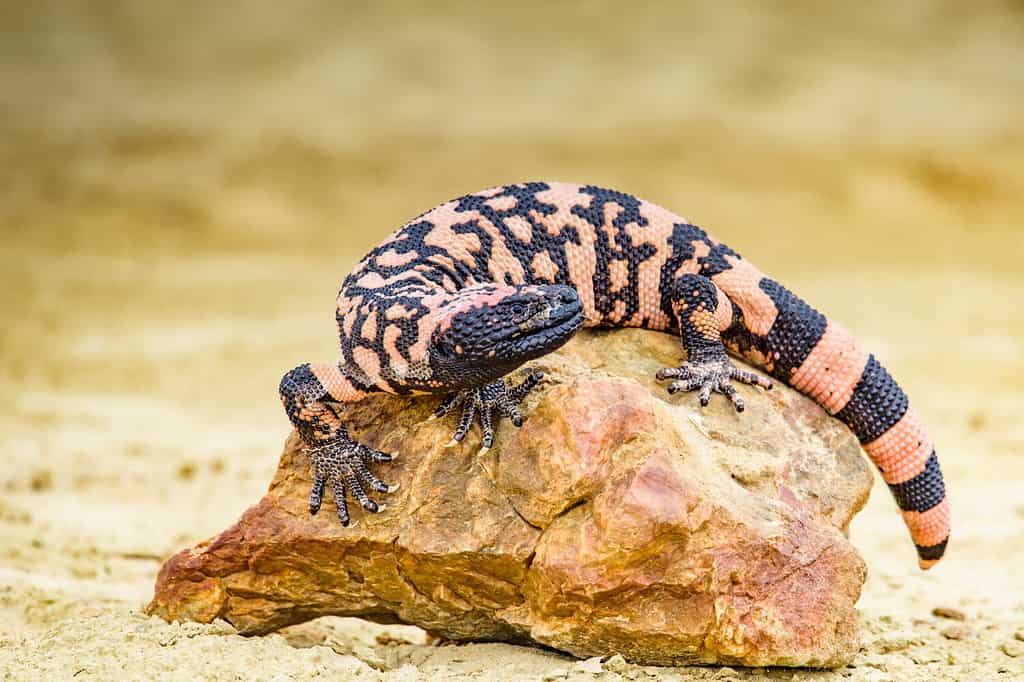
©Vaclav Sebek/Shutterstock.com
Utah is one of the few states where it is possible to encounter the venomous Gila monster, a rare, colorful lizard.
The state is also home to the Great Basin spadefoot, a unique amphibian adapted to Utah’s arid regions. It spends most of its life underground, emerging during heavy rains.
Additionally, Utah is home to various species of rattlesnakes. It includes the western rattlesnake, known for its distinctive rattling sound as a warning signal.
Fish
Lastly, Utah hosts various fish species in its different bodies of water.
Utah is famous for its cutthroat trout populations. However, their habitats are often threatened. Efforts are ongoing to protect and restore native cutthroat habitats.
As introduced species, the rainbow trout and brown trout are popular among anglers living in the state’s rivers and lakes. The Colorado pikeminnow, a rare and endangered fish, lives in Utah’s portion of the Colorado River.









